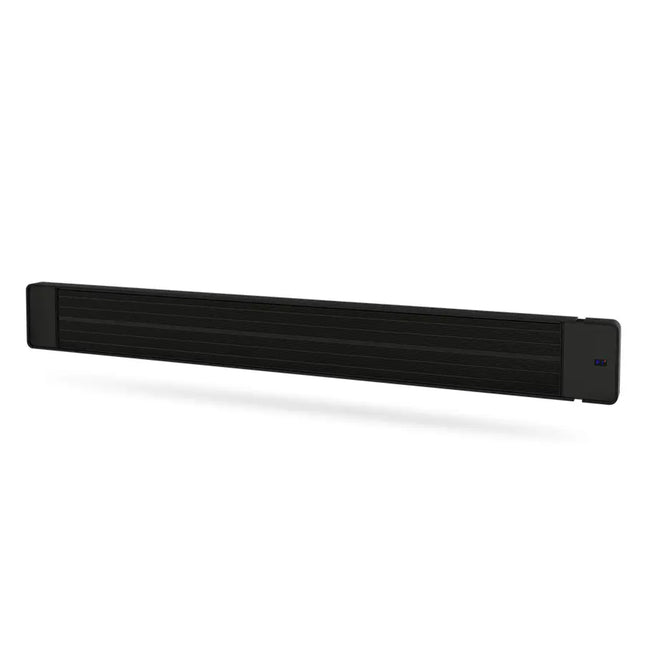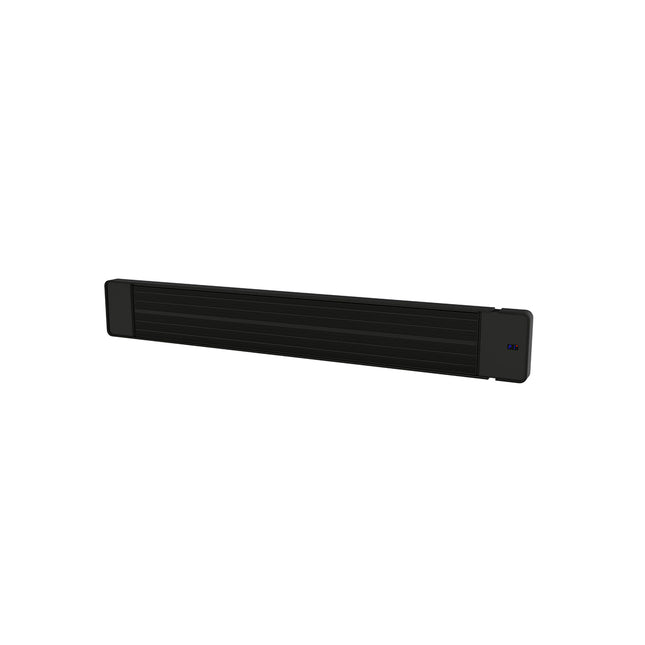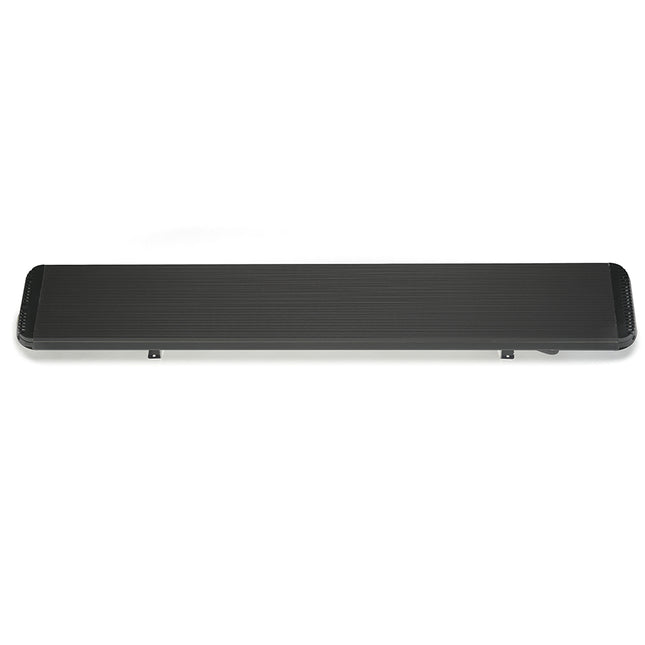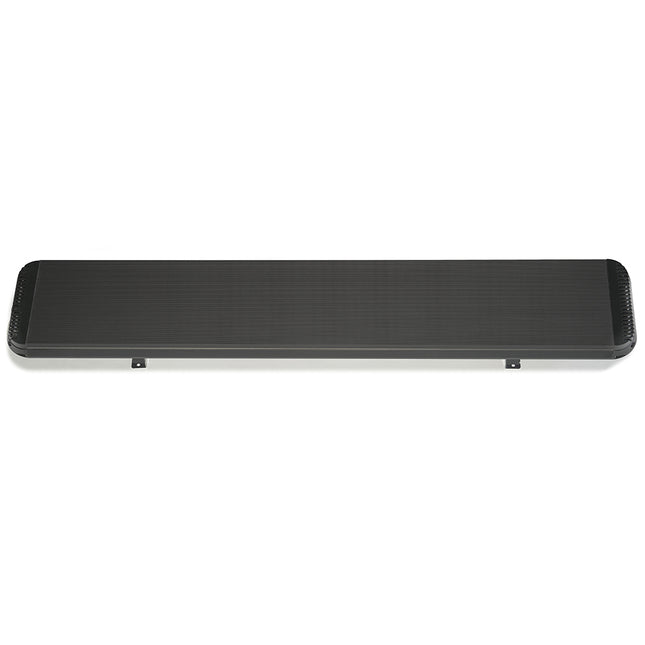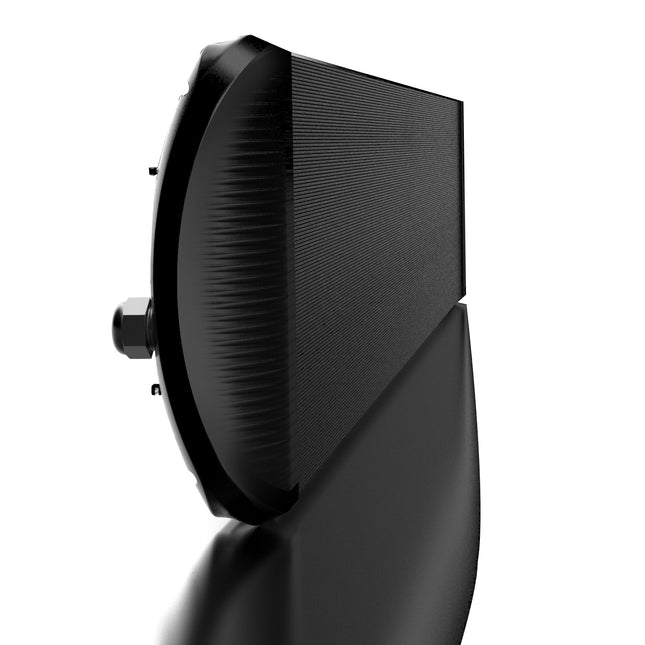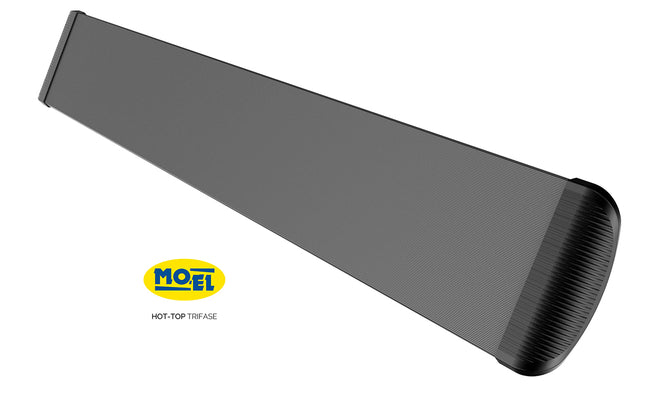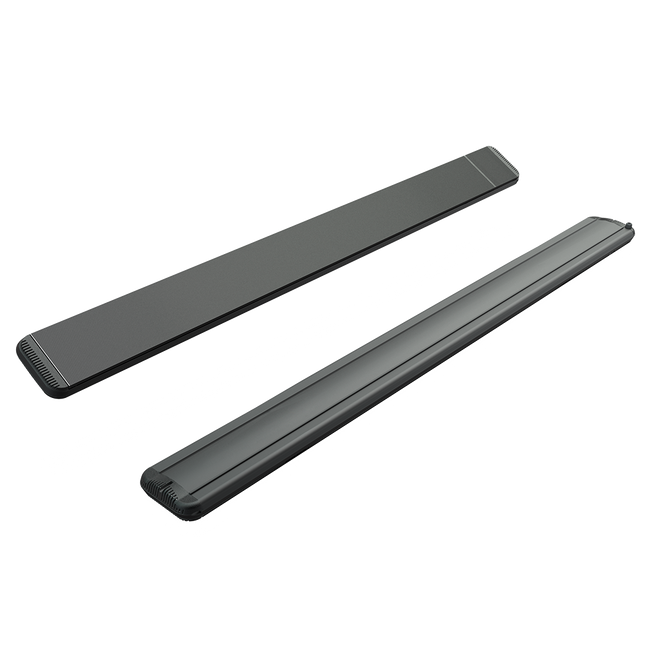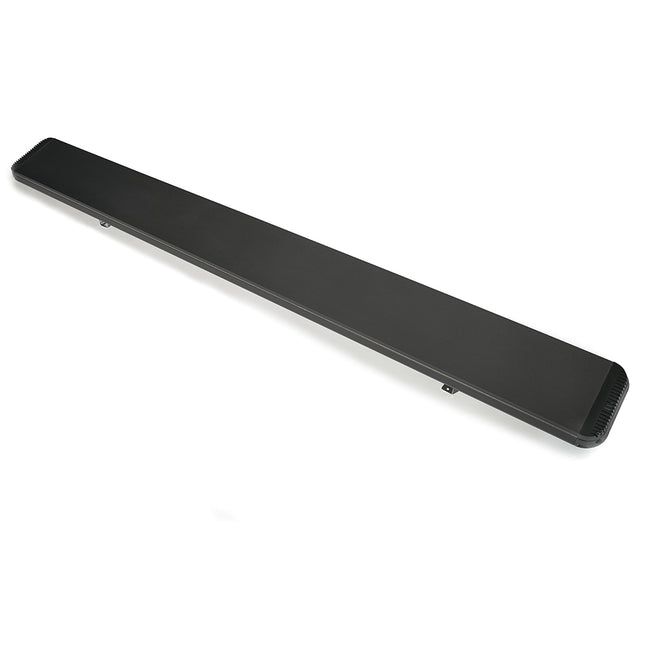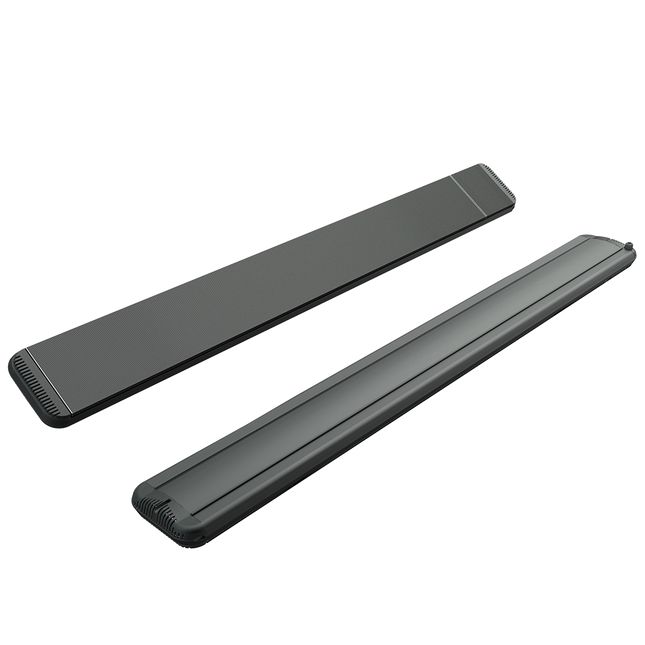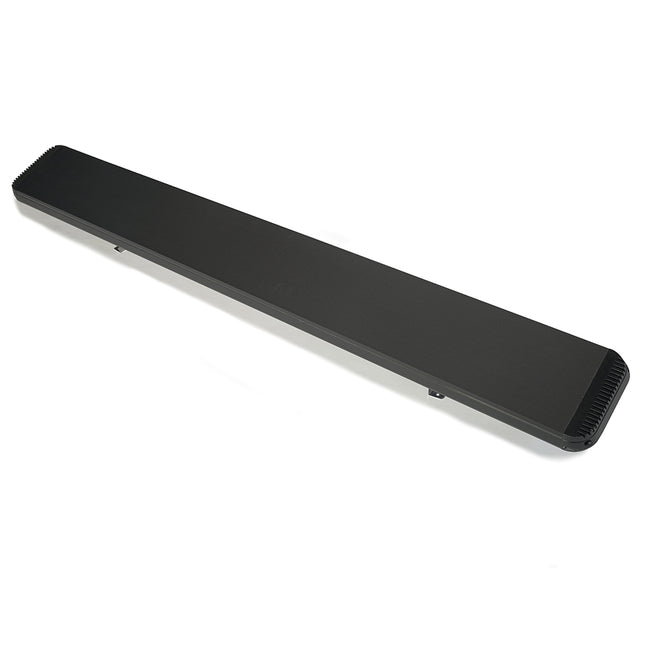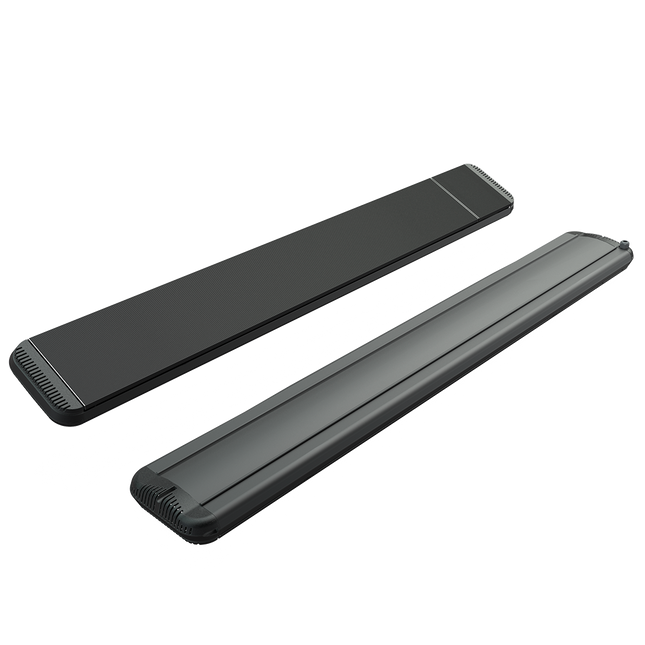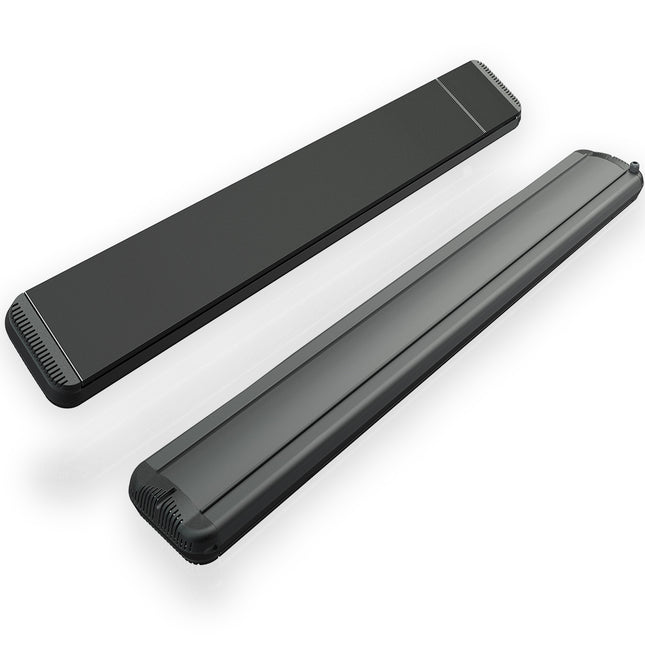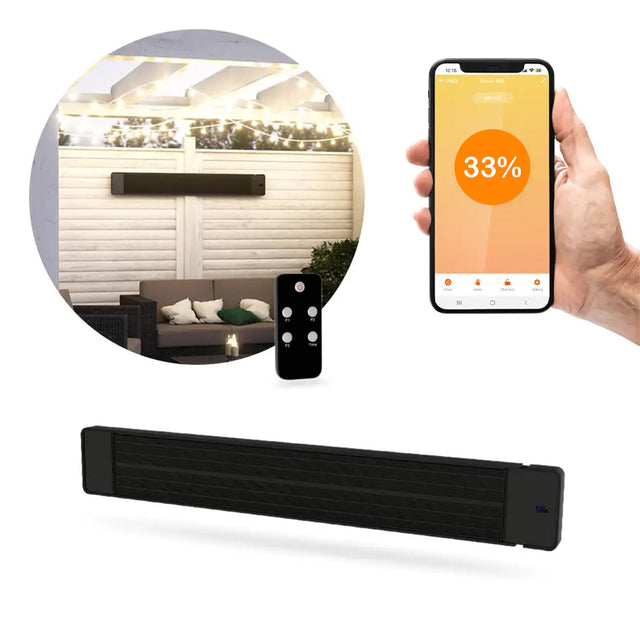
Heat lines
A patio that feels comfortable even in spring and autumn, a conservatory that doesn't feel chilly as soon as the sun goes down, or a living room where you need extra warmth quickly: heatlines are designed for these kinds of situations. These long, narrow infrared heaters provide direct heat, precisely where you need it. The result is a comfortable feeling, without having to heat the air or increasing energy consumption.
How do heatlines work?
Heatlines use long-wave infrared radiation. This means that objects and people are heated directly, instead of the surrounding air. This has two advantages: the heat is immediately noticeable and isn't lost to drafts or air circulation. Because the radiation is more focused, a room feels more comfortable faster without having to heat the entire volume.
What sets these spotlights apart is their shape. They're sleek and discreet, making them easy to mount on the wall or ceiling without being a distraction. In modern interiors, they're barely noticeable, and outdoors, they're neatly concealed in a canopy or attached to a facade.
Applications in the home and outdoors
Heatlines are more versatile than you might think. Outdoors, they're often used under verandas, at restaurants with patios, or above balconies, allowing you to sit outside longer without freezing. Indoors, they're ideal as an additional heat source in spaces where quick comfort is needed, such as a bathroom, a home office, or a practice room.
Because heatlines provide targeted heating, they can be easily combined with other systems. In a well-insulated home, a hybrid solution, such as hybrid panels , can form the basis, while heatlines provide direct zone heating. For those who prefer robust materials, metal hybrid panels , and for an even faster-reacting heat source, you can opt for metal infrared panels .
Energy efficient and sustainable
While heatlines are powerful, they don't consume unnecessary energy. Because the radiation has an immediate effect, you only turn them on when and where you need the heat. Moreover, they're low-maintenance: no moving parts, no filters, and no complex technology that can wear out. This makes them suitable for intensive use, both residential and commercial.
Frequently asked questions about heatlines
Are heatlines suitable for outdoor use?
Yes, most models are splashproof and designed to withstand rain and wind.
How quickly do you feel the heat?
Almost instantly. Because the radiation is focused, you'll notice the effect within seconds.
Can heatlines heat an entire room?
This is possible in well-insulated rooms, but they are often used as additional heating or targeted zone heating.
What is the difference with regular infrared panels?
Heatlines are narrow radiators that are better suited for specific zones, while panels are often used as flat main heating.
What capacity do I need?
That depends on the size of the space and whether it's indoors or outdoors. Our advisors are happy to help you via the contact page .

